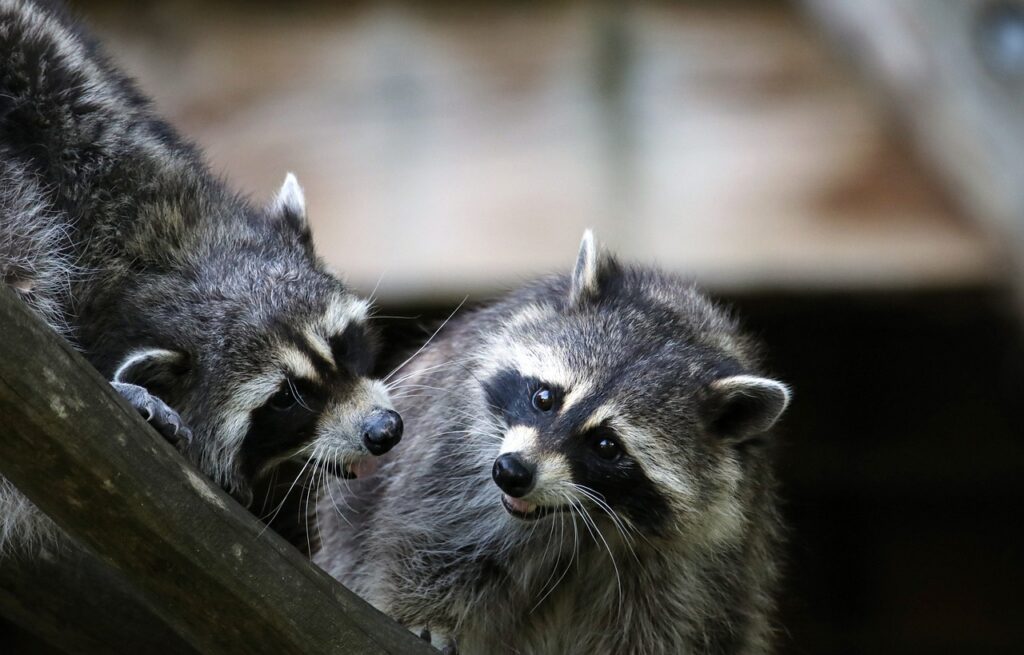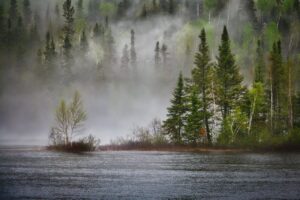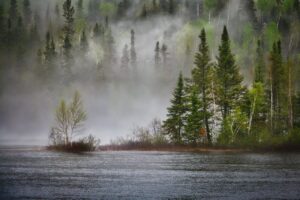What Role Do Invasive Species Play In Biodiversity Loss? In the fascinating world of biodiversity, a question looms large: what role do invasive species play in its gradual loss? As we explore the intricate relationships between flora and fauna, it becomes evident that the introduction of exotic species can have far-reaching consequences. By examining the delicate balance of ecosystems and the impact of invasive species, we can gain valuable insights into the complex puzzle that is biodiversity loss. Join us on this journey of discovery as we unravel the captivating connection between invasive species and the fragility of our planet’s rich tapestry of life.

Introduction
Welcome, friends! Today, we are going to explore the fascinating world of invasive species and their impact on biodiversity. Invasive species have become a growing concern worldwide, as they pose significant threats to the delicate balance of ecosystems. By outcompeting native species for resources, preying on them, and introducing diseases, invasive species can disrupt entire ecosystems and cause the loss of native biodiversity. In this article, we will delve into the definition of invasive species, delve into their impacts on biodiversity, examine case studies, explore the economic and ecological costs associated with invasions, and discuss the drivers behind the introduction of these species. Additionally, we will explore various management and control methods, international efforts and regulations, as well as the challenges and future directions in combating invasive species. So, let’s dive right in!
Definition of Invasive Species
Invasive species refer to non-native organisms that, when introduced into a new environment, have the potential to cause harm to the native flora and fauna and the ecosystems they inhabit. These species usually thrive in their new environment due to the absence of natural predators or controls that would otherwise keep their populations in check. The key criteria to determine invasiveness include rapid population growth, wide-ranging distribution, and negative impacts on the environment, economy, or human health.
Criteria to Determine Invasiveness
To classify a species as invasive, scientists look for certain characteristics such as high reproductive rates, adaptability to diverse habitats, and a lack of natural predators. These features allow invasive species to outcompete native species for resources and establish themselves in new environments. Additionally, invasiveness can be determined by studying the ecological and economic impacts of a species on its new ecosystem.
Examples of Invasive Species
Examples of invasive species are found across the globe. In North America, the Burmese python has rapidly spread through the Florida Everglades, decimating local populations of small mammals. In Australia, the cane toad has had a devastating impact on native wildlife due to its toxic skin secretions. In Europe, the common ragweed poses a threat to human health, causing hay fever and respiratory problems. These are just a few instances of the damage that invasive species can inflict on ecosystems and the creatures that call them home.
Impacts of Invasive Species on Biodiversity
Invasive species can have far-reaching impacts on biodiversity, leading to the loss of native species and disrupting the balance of ecosystems. Let’s explore some of the key ways invasive species affect biodiversity.
Competition for Resources
One of the main impacts of invasive species on biodiversity is their ability to outcompete native species for resources such as food, water, and space. Invasive species often have competitive advantages, such as rapid growth rates, high reproductive capacities, and the ability to tolerate a range of conditions. As a result, they can quickly dominate and deplete resources, leading to the decline or extinction of native species that are unable to cope with the increased competition.
Predation and Displacement
Invasive species can also have direct impacts on native species through predation and displacement. By preying on native species, invasive predators can disrupt natural food webs and cause declines in local populations. For example, the introduction of the brown tree snake to Guam led to the extinction of several native bird species. In other cases, invasive species may outcompete native species for habitat, leading to their displacement and potential extinction.
Introduction of Diseases
Invasive species can act as carriers or reservoirs of diseases that can affect native plants, animals, and even humans. These diseases can have devastating effects on vulnerable populations, leading to reduced reproductive success, weakened immune systems, and increased mortality rates. The introduction of the fungal pathogen Batrachochytrium dendrobatidis has been responsible for the decline of amphibian populations worldwide, with some species facing the brink of extinction.
Disruption of Ecosystem Functions
Invasive species can disrupt the functioning of ecosystems by altering key ecological processes such as nutrient cycling, pollination, and seed dispersal. For example, the invasion of the water hyacinth in many tropical regions forms dense mats that block sunlight, preventing other plants from photosynthesizing and disrupting the oxygen balance in aquatic ecosystems. These disruptions can have cascading effects on the entire ecosystem, leading to further species decline and loss of biodiversity.
Case Studies on Invasive Species and Biodiversity Loss
To understand the real-world impacts of invasive species on biodiversity, let’s examine a few case studies from different geographical locations.
Miconia Invasion in Hawaii
One of the most notorious examples of invasive species impacting biodiversity is the invasion of Miconia calvescens in Hawaii. Originally from South America, Miconia aggressively colonizes native forests, forming dense thickets that prevent sunlight from reaching the forest floor. This invasion has resulted in the loss of native plant species and the subsequent decline of endemic bird populations that depend on these plants for food and habitat.
Zebra Mussel Invasion in the Great Lakes
The introduction of zebra mussels to the Great Lakes in the 1980s has had catastrophic effects on the ecosystem. These small, invasive mollusks reproduce rapidly and attach themselves to surfaces such as boats, pipes, and native mussel shells, disrupting their functions. Zebra mussels filter large amounts of water, depleting the food resources for native fish species and causing declines in their populations. Additionally, their sharp shells pose a threat to recreational activities and infrastructure.
Asian Carp Invasion in the United States
Asian carp, a group of invasive fish species, has become a significant threat to aquatic ecosystems in the United States. Their large size, high reproduction rates, and ability to outcompete native fish species have led to the decline of native populations and a disruption of food webs. The potential invasion of Asian carp into the Great Lakes poses a major concern due to the potential collapse of the region’s multi-billion dollar fishing industry.
Economic and Ecological Costs of Invasive Species
The impacts of invasive species extend beyond biodiversity loss and have economic and ecological consequences. Let’s explore some of the key costs associated with invasive species invasions.
Loss of Native Species
The loss or decline of native species due to invasive species can have significant economic and cultural impacts. Native species often play crucial roles in ecosystem functioning, such as pollination, seed dispersal, and pest control. The loss of these services can have far-reaching effects, including reduced agricultural productivity, increased pest outbreaks, and decreased resilience to environmental changes. Additionally, the loss of iconic native species can harm tourism and cultural values associated with biodiversity.
Impact on Agriculture and Forestry
Invasive species can have severe economic impacts on agricultural and forestry industries. They can damage crops, reduce yields, and increase the need for expensive pest control measures. Invasive insects, such as the emerald ash borer, have decimated ash tree populations in North America, leading to significant economic losses for the forestry sector. Similarly, invasive plant species can reduce the productivity of farmland by competing with crops and decreasing overall yields.
Costs of Control and Eradication
Managing and controlling invasive species can incur substantial costs. These expenses include monitoring, research, control methods, restoration efforts, and public education campaigns. Governments, organizations, and communities must allocate funds to combat invasive species, diverting resources that could otherwise be used for other pressing environmental issues. The costs of control and eradication can quickly escalate, making prevention and early detection vital for minimizing these financial burdens.
Drivers of Invasive Species Introduction
Understanding the drivers of invasive species introduction is crucial for effective management and prevention strategies. Several factors contribute to the spread of invasive species, and let’s explore some of the main drivers.
Global Trade and Travel
Global trade and travel have greatly facilitated the movement of species around the world. Ships, airplanes, and other modes of transportation inadvertently transport species to regions outside their native range. Invasive species can hitchhike on these transportation networks, establishing themselves in new areas where they can thrive without natural predators or controls. The volume and speed of global trade and travel have accelerated the rate of invasive species introductions, making it challenging to regulate and manage their spread effectively.
Climate Change
Climate change is another driver that can promote the establishment and spread of invasive species. As temperatures and precipitation patterns shift, new habitats may become suitable for invasive species to colonize. In some cases, climate change can weaken the resistance of native species, making them more susceptible to invasions. Additionally, extreme weather events associated with climate change, such as storms and floods, can unintentionally transport invasive species to new areas.
Land Use Change
Human activities that result in land use change, such as urbanization, deforestation, and agriculture expansion, create opportunities for invasive species to establish and thrive. These changes often disrupt natural ecosystems, creating gaps and disturbances that invasive species can exploit. For example, the conversion of natural habitats into agricultural land can create new niches for invasive plant species to invade and dominate.
Management and Control of Invasive Species
Managing and controlling invasive species is a complex task that requires a combination of prevention, early detection, and effective control methods. Let’s explore some of the key strategies used to combat invasive species.
Prevention and Early Detection
Preventing the introduction of invasive species is of utmost importance. This can be achieved through strict regulations on the import and movement of potential invasive species, education and awareness campaigns to inform the public and industry about the risks, and the establishment of early detection networks to identify and respond to new invasions swiftly.
Mechanical and Chemical Control Methods
Mechanical and chemical control methods are commonly used to mitigate the impacts of established invasive species. Mechanical methods include physically removing or disrupting the invasive species, such as manual removal of plants or trapping and removing invasive animals. Chemical control methods involve the use of herbicides, pesticides, or sterilization techniques to reduce populations or eliminate invasive species. These methods must be executed carefully to minimize harm to native species and ecosystems.
Biological Control
Biological control involves the use of natural enemies, such as predators, parasites, or pathogens, to control invasive species populations. This method aims to restore the natural balance by introducing species that specifically target the invasive species without harming native species. Biological control requires extensive research and careful consideration to ensure that the introduced biological control agents do not harm non-target species or cause unintended ecological consequences.
Restoration of Native Habitats
Restoring native habitats is essential for recovering biodiversity and reducing the impacts of invasive species. By restoring native vegetation, removing invasive species, and reintroducing native fauna, degraded ecosystems can regain their ecological functions and provide suitable habitats for native species to thrive. Restoration efforts often involve collaboration between scientists, conservation organizations, and local communities to ensure the long-term success of these projects.
International Efforts and Regulations
Combatting invasive species requires international cooperation and concerted efforts. Various organizations and agreements exist to address the challenges posed by invasive species.
Convention on Biological Diversity
The Convention on Biological Diversity (CBD) is a global agreement aimed at conserving biological diversity, promoting sustainable use, and equitable sharing of the benefits derived from genetic resources. The CBD recognizes the threats posed by invasive species and recommends measures to prevent, control, and eradicate them. The CBD promotes the sharing of scientific information, capacity building, and international cooperation to tackle the invasive species crisis.
International Union for Conservation of Nature
The International Union for Conservation of Nature (IUCN) is a global organization dedicated to the conservation of nature and biodiversity. The IUCN works to identify and prioritize invasive species threats, develop management strategies, and provide guidelines for the prevention and control of invasions. Through its Species Survival Commission and Invasive Species Specialist Group, the IUCN contributes to global efforts to address invasive species and their impacts on biodiversity.
Challenges and Future Directions
While progress has been made in managing and controlling invasive species, several challenges persist. Addressing these challenges and future directions will be crucial in effectively mitigating the impacts of invasive species on biodiversity.
Lack of Awareness and Funding
Public awareness regarding the threats posed by invasive species and the need for their management is crucial. Many invasive species go unnoticed until they have already caused significant harm, highlighting the need for education and outreach programs to increase awareness among the general public, policymakers, and industry stakeholders. Additionally, funding for research, monitoring, and management of invasive species remains limited, hindering the implementation of effective prevention and control strategies.
Predicting and Mitigating Impacts
Predicting the impacts of invasive species on biodiversity is a complex and challenging task. The interactions between invasive species and native ecosystems are multifaceted and can vary depending on the specific context. Improved modeling and forecasting techniques, as well as long-term monitoring efforts, are necessary to better understand the potential impacts of invasive species and develop proactive management strategies.
Long-Term Monitoring and Research
Continued monitoring and research efforts are essential for assessing the effectiveness of management strategies and understanding the long-term impacts of invasive species on ecosystems. Long-term monitoring allows for the detection of new invasions, evaluation of control measures, and tracking changes in biodiversity over time. Additionally, research on the ecological impacts and potential risks of specific invasive species can inform decision-making and guide management efforts.
Conclusion
Invasive species pose a significant threat to biodiversity and the health of our ecosystems. By outcompeting native species, disrupting food webs, and introducing diseases, invasive species can drive the loss of native biodiversity and undermine the delicate balance of ecosystems. The economic and ecological costs associated with invasive species invasions are substantial, impacting agriculture, forestry, and other industries. However, with proper prevention, early detection, and effective management and control strategies, we can mitigate the impacts of invasive species and preserve the diversity of life on Earth. By raising awareness, promoting international cooperation, and investing in research and monitoring, we can work towards a future where invasive species no longer threaten our precious natural resources. Together, let’s protect our biodiversity and ensure a harmonious coexistence between native species and ecosystems!




